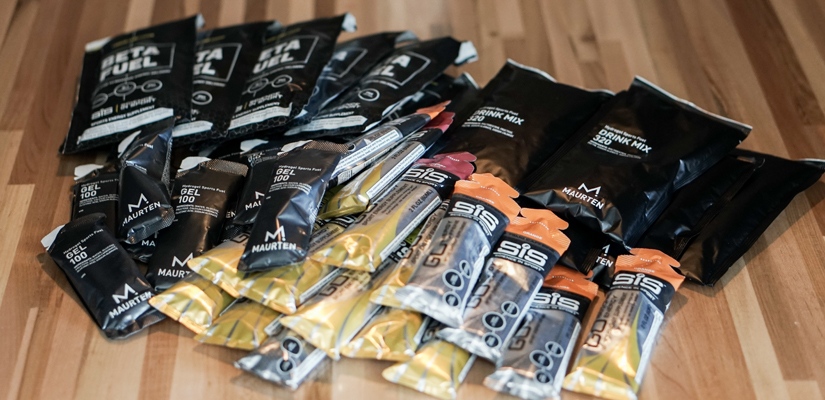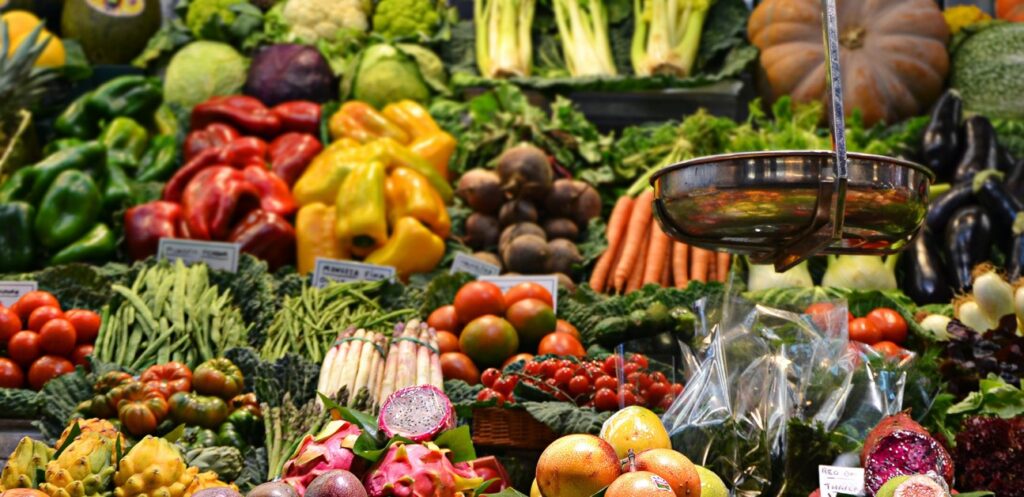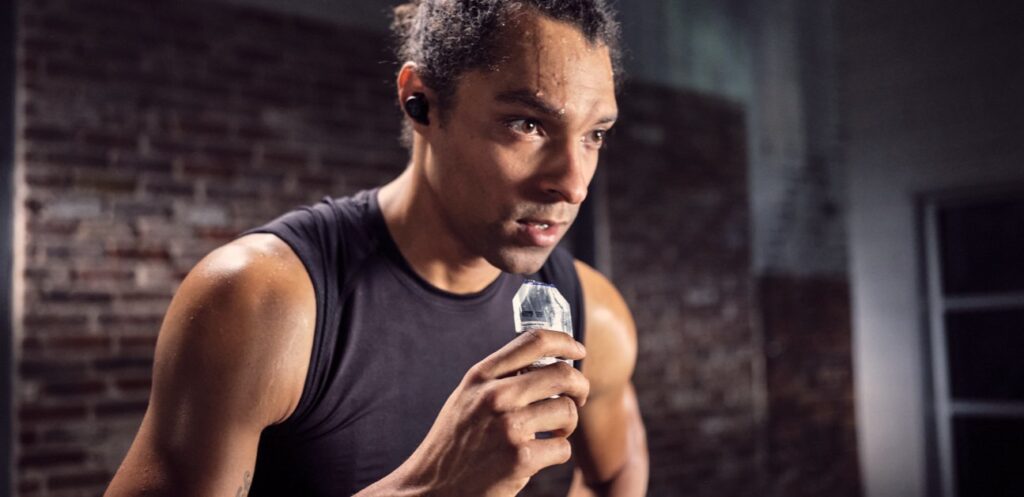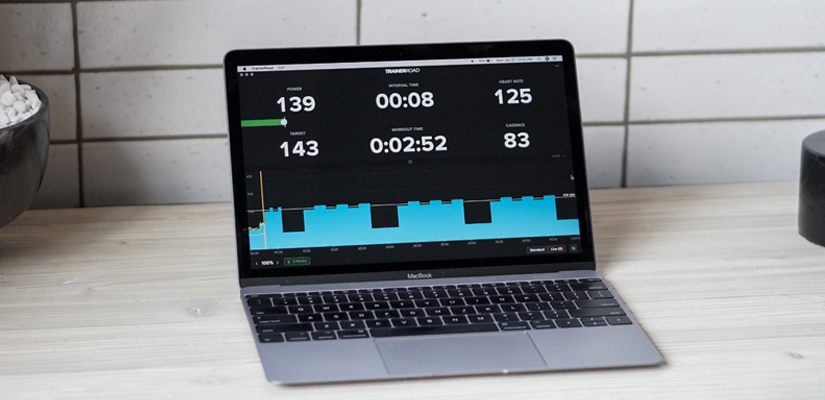How to Use Carbs for Maximum Performance

For endurance athletes, carbs are vital for maximum performance. If you want to go fast, you’ve got to have sugar on board. That means consuming 60-90 grams of carbs per hour of cycling. Whether you’ve got a big training day or event, these carbohydrate nutrition tips will help.
For more information on carbs and cycling, check out Ask A Cycling Coach Ep 244
Carbohydrates and Glucose
It is hard to overstate the importance of glucose for endurance performance. The mitochondria use this simple sugar to produce adenosine triphosphate (ATP), the energy source for each energy system used in cycling. All forms of carbohydrates you ingest are eventually converted to glucose and released into the bloodstream. However, when your body has more glucose than it needs, it is converted to glycogen and stored in the muscles and liver.
Adaptive Training
Get the right workout, every time with training that adapts to you.
Check Out TrainerRoadWhen glycogen stores are full, the liver converts the glucose to triglycerides, which are stored as fat. The good news is that you can increase the amount of glycogen your muscles can store through training. As you need more glucose to fuel your efforts, the body converts glycogen into glucose for ATP production. Peak endurance performance is all about managing these energy stores, highlighting the importance of the amount and timing of your nutrition.
Carbohydrate Uptake
The amount of glucose you burn varies significantly based on several things—including the intensity of your ride. As a general rule, the more intense the activity, the more your body relies on the quick energy of glucose. The longer your ride, the more important it becomes to get enough carbs per hour of cycling.
Additionally, the number of carbs you can absorb, then store as glycogen, varies based on level of depletion, activity level, and the type of carbs consumed. During exercise, glycogen synthesis is nearly non-existent, which signifies that the body is not focused on storing energy for later use. Instead, the carbs you consume are being used almost immediately to fuel your working muscles.
Carbs Before Your Ride
Ingesting carbs before your workout or event is crucial for peak performance. The goal is to ensure sufficient glycogen stores are in the liver and muscles for the work that you are going to do. Fortunately, it’s easier to fully stock your glycogen stores if you’re eating well in advance of your event because it can be accomplished by eating regular meals.
Aside from fueling your ride, multiple benefits stem from eating hours, if not days, beforehand. There is less chance of GI distress because you are consuming the carbs incrementally. That is, you are getting them the usual way, with conventional foods. By utilizing regular meals to top off glycogen stores, you can emphasize nutritional content like minerals and vitamins. Additionally, you can carb load for a big training day or event.
Time of Absorption
Before your ride, carbohydrate absorption is mostly reliant on your level of glycogen depletion, rate of ingestion, and the type of carb. The lower your glycogen stores, the faster carbs will be absorbed.
What and When Should I Eat
The more complex the carbohydrate, the longer it takes to be digested and absorbed. Whole grains and beans take a couple of hours, while potatoes are a bit quicker at an hour. Fruit and vegetable absorption times are mostly dependent on fiber content. More fiber means longer times, but 20-40 minutes is usually sufficient. It’s important to remember that ingesting protein and fat will lengthen this timeline. A good rule of thumb leading into an event is to eat a carb-centric meal 3-4 hours beforehand. The timeframe can be shorter depending on the complexity of the carbs in your meal. This gives your body ample time to digest and absorb the carbohydrates.
Carbs During Your Ride
Eating during your ride is all about fueling the muscles for the work you are doing. Because you need these carbohydrates to get to work quicker, a simple carbohydrate is best. These narrow timeframes reinforce the need for fast absorption. The simpler a carb is, the quicker it will get to work.
Time of Absorption
During the ride, the rate at which you absorb carbs depends on the intensity. The higher the intensity of the work, the slower the absorption. But generally, simple sugars like glucose and fructose are taken up in 15-20 minutes.
How Many Carbs Per Hour of Cycling
Glucose and fructose are interesting because they use different pathways in the body. In simple terms, glucose is sent directly into the bloodstream, and fructose is sent to the liver to be converted to glucose. Because these two simple sugars have different metabolic pathways, finding an optimal ratio has been at the center of seeing how many carbs per hour of cycling to consume.
The problem is that our GI system can only process a certain amount of carbohydrates at a given time. Once you exceed that limit, GI distress becomes an issue. For a long time, the standard advice has been 60-90 grams of carbs per hour using a 2:1 glucose to fructose ratio. However, research is emerging that shows that upwards of 140g/hr can be absorbed using a 1:1 ratio.
Ways to Get Enough Carbs per Hour
While it may be possible to take in more, a good starting place is 60-90 grams of carbs per hour of cycling. The primary reason for this starting point is that many athletes tolerate it well. Over time, you can work on taking in more, but it takes time. Below are three ways to get between 60-90 grams of carbs per hour.
- One bottle of a high-carb drink mix like SiS Beta Fuel (80g)
- One bottle of a medium-carb drink mix like Skratch Labs Hydration Mix (21g) and two GU Energy Gels Hoppy Trails (46g)
- One bottle of Precision Hydration PH 500 (18g) and one packet of Clif Blok Energy Chew (48g)
What and When Should I Eat
Sports drinks and other products like gels are exceptionally effective for fueling during a ride. Try to ingest some carbs every 15 to 30 minutes. Before the start of your event or ride, you can consume a gel to get a great start on your nutrition. Just be careful to do this with less than 15 minutes of the start time, to avoid a hypoglycemic rebound.
A word of caution; what and when to eat is highly subjective and varies significantly between athletes. This is something that you need to train and experiment with during your training. Taking in more carbs than you can absorb leads to excessive gas and, eventually, diarrhea. Your tolerance for carbs during exercise is highly unique, so practice and take notes.
Carbs After Your Ride
After your event or workout is over, you’ll want to onboard carbs to replenish glycogen stores. That way, you can be ready to ride again. Depending on your situation, you can do this with recovery drinks and regular meals.
Time of Absorption
For about 30-40 minutes after, you can process carbohydrates and store glycogen at a high rate. This higher absorption rate trails off over time but stays elevated for about 48 hours. Additionally, the more glycogen depleted you are; the faster replenishment will occur. Adding some protein (4:1 carb to protein ratio) stimulates rapid glycogenesis as well as other recovery benefits like muscle repair.
What and When Should I Eat
Ideally, you’ll want to ingest some carbs as soon are you are finished. How you get them is flexible. A best-case scenario would be to finish your ride, then sit down to a nutrient-dense meal. In the real world, this is easier said than done. Typically, you can take in some drink mix or specific recovery drink to kickstart your refueling. Then when possible, sit down to a healthy meal.
With these tips, you can ensure that you have the fuel your body needs. Just remember, your body is unique. With training and experimentation over time, you can nail your nutrition.
For more cycling training knowledge, listen to Ask a Cycling Coach — the only podcast dedicated to making you a faster cyclist. New episodes are released weekly.


